![]()
Seyed Rasoul Hosseini
PhD Graduate, 2020
Dissertation: “DESIGN AND OPTIMIZATION OF A MODULAR DC-DC POWER CONVERTER FOR MEDIUM VOLTAGE SHIPBOARD APPLICATIONS.”
Abstract: Power electronic converters rated for medium voltage direct current (MVDC) are promising for electrification of future ships. In shipboard electrification, due to limitation of space, energy and technical maintenance, the high-power density, high efficiency and modularity of the power electronic converters are desired. Utilizing power modules made from wide band gap (WBG) semiconductors like silicon carbide (SiC) and high frequency power transformer (HFPT) can be beneficial for obtaining the high-power density, high efficiency and isolation that is required for the power electronic converters. To provide power for the low voltage (LV) DC loads, a conversion of the power from MVDC main bus to LVDC is needed. Therefore, a DC-DC converter is an essential component of a DC power system. DC-DC converter is a multipurpose element in Unit-based protection architecture (UBPA) which is an architecture that eliminates the need for DC circuit breaker (CB) and instead relies on isolated power electronic converters for protection of the system. Topologies based on Dual active bridge (DAB), Neutral point clamp (NPC) and Modular Multi-level Converter (MMC) are suggested for such a DC-DC converter rated for megawatt (MW) power level. Switching at MV level with high frequency in the ship environment is challenging because of the parasitic coupling that appears between the power module, MV side of the transformer and the ship haul which is made from the materials capable of conducting electricity. Moreover, the transformer used in the isolated DC-DC converter is one of the main contributors to the weight and power density of the converter. In this study, the DAB converter is suggested as a building block for an input series output parallel (ISOP) connected converter and analytical equations are provided for the design. A novel design for the HFPT is proposed and analytical formula is derived for the thermal loss and the leakage inductance of the HFPT. Optimization methodology using evolutionary algorithms method like genetic algorithm is applied to the design to extract the optimal values for a design. A case study is also provided in this study.
University of Illinois, Chicago
![]()
Marzieh Karami
PhD Graduate, 2020
Dissertation: “THREE-LEVEL CONVERTERS FOR LOW VOLTAGE ACTIVE FRONT END MOTOR DRIVES.”
Abstract: Electric drives with Active Front End (AFE) converters can provide benefits such as lower harmonic current injections to the grid, smaller size filters, lower THD values and cost saving for injection of power to the grid in brake situations. SiC-MOSFET based two-level converters can be a promising topology for Active Front End (AFE) application in electric drives. The possibility of high switching frequency will make the grid filters smaller. Grid filters are used for EMC and power quality issues. However, there are practical limitations for increasing the switching frequency such as dead time in the gating signals, sampling requirements, and electro-magnetic interference (EMI) considerations, besides the need for high frequency magnetic material for the LCL line filter. However, three-level converters provide the opportunity to switch at a lower frequency and also reduce the filter size compared to a two-level IGBT converter. Three-level converters can be built using low voltage rated modules with lower switching losses and reduced cost compared to SiC based two-level converters. In this work, a comparison between three-level converters and two-level converters is presented focusing on power loss, filter size and application benefits. This comparison is based on an optimization algorithm with the objective function of weight, volume and cost.
The topologies and modulation techniques for multilevel converter are categorized at first by a thorough literature survey. The pros and cons for various multilevel topologies and modulation techniques are discussed. The 3-level neutral point clamped (NPC) topology is selected to build a 25 hp, 480V power conversion system. LCL filter design for comparability with grid requirements has been done and the optimal size of the LCL filter is derived considering thermal limitations.\par
To make the comparison between different topologies and switch types possible, it is necessary to consider the maximum junction temperature relation to the switching frequency. In this work, a new modulation method is proposed to improve the performance of three-level converters considering losses and thermal performance. Also, a thermal model is derived for SiC MOSFET power modules that takes the effect of MOSFET channel conduction into consideration.
Losses for different modulation methods is analysed and compared for two-level and three-level converters. For a specific application of drives, low speed operation is investigated and the comparison between three-level and two-level converters is considered. The methods for calculating losses are considered carefully to ensure maximizing the utilization of the power semiconductors (for highest power density designs). A novel modulation method is developed for low speed operation of power converters.
Finally, an optimization is done for finding minimum volume, highest efficiency, minimum common mode pulses and complying with EMI constraints. This optimization has been broken into multiple steps for reducing the problem size. This will enable us to validate the results more efficiently. Some parts of this optimization are done automatically such as the inductor magnetic and thermal design.
MS Computer Engineering-Power Systems, Sharif University of Technology, 2012
BS Electrical engineering-Power Systems, Sharif University of Technology
Lead Research Engineer
Eaton
Karthik Palaniappan
PhD Graduate, 2019
Dissertation: “A VIABLE RESIDENTIAL DC MICROGRID FOR LOW-INCOME COMMUNITIES– ARCHITECTURE, PROTECTION AND EDUCATION.”
Abstract: The availability of fossil fuels in the future and the environmental effects such as the carbon footprint of the existing methodologies to produce electricity is an increasing area of concern. In rural areas of under-developed parts of the world, the problem is lack of access to electrification. DC microgrids have become a proven solution to electrification in these areas with demonstrated exceptional quality of power, high reliability, efficiency, and simplified integration between renewable energy sources (principally solar PV) and energy storage. In the United States, a different problem occurs that can be addressed with the same DC microgrid approach that is finding success internationally. In disinvested, underserved communities with high unemployment and low wages, households contribute a significant portion of their income towards the fixed cost of their electrical utility connection, which by law must be supplied to every household. In order to realize such a microgrid in these communities, there are three major areas which need to be accounted for. Firstly, there needs to be a custom architecture for the community under consideration and it needs to be economical to match the needs of the underserved community. Secondly, DC microgrid for home energy interconnection is potentially less complex and less expensive to deploy, operate and maintain however, faster protection is a key element to ensuring resilience, viability and adoptability. Lastly, these types of efforts will be sustainable only if the people in the community are educated and invested in the same as they are the key stakeholders in these systems.
This dissertation presents an approach to make the DC Microgrid economically feasible for low income households by reducing the cost they incur on electric bills. The approach is to overlay a DC system into homes that have a utility feed in order to incorporate renewable energy usage into an urban setting for the express purpose of driving down individual household utility costs. The results show that the incorporation of a certain level of “smart” appliances and fixtures into the renovation of vacated homes and the use of a microgrid to enable sharing of renewable energy, such as solar power combined with energy storage, between homes in the proposed architecture yields the least expensive option for the patrons. The development of solid state circuit breakers that interface between the microgrid and the home DC power panels helps in faster protection of the DC system. In this dissertation, a SiC JFET based device is designed and built to protect against DC faults at a faster rate than the available solutions. The prototype is tested for verification and used to discriminate against short circuit faults and the results show the successful fault discrimination capabilities of the device. A basic system level simulation with the protection device is implemented using Real Time Hardware in the loop platform. Finally, as a part of engaging the community members, the high school kids in the area who might potentially be living in some of the houses in this community are being educated about the microgrid, appliances and other technologies to get a better understanding of STEM and hopefully inspiring them to pursue a career in STEM in the future.
Bora Novakovic
PhD Graduate, 2017
Research Focus: RENEWABLE ENERGY
BS from University of Belgrade, Belgrade, Serbia, 2007.
Electrical Engineer
Rockwell Automation
Zeljko Jankovic
PhD Graduate, 2020
Research Focus: MODELING AND IMPLEMENTATION OF A MICROGRID-TIE POWER INVERTER
Abstract: The concept of microgrids is a new building block of smart grid that acts as a single controllable entity which allows reliable interconnection of distributed energy resources and loads and provides alternative way of their integration into power system. Due to its specifics, microgrids require different control strategies and dynamics of regulation as compared to ones used in conventional utility grids. All types of power converters used in microgrid share commonalities which potentially affect high frequency modes of microgrid in same manner. There are numerous unique design requirements imposed on microgrid tie inverters, which are dictated by the nature of the microgrid system and bring major challenges that are reviewed and further analyzed in this work. This work introduces, performs a detailed study on, and implements nonconventional control and modulation techniques leading to performance improvement of microgrid tie inverters in respect to aforementioned challenges.
BS from University of Belgrade, Belgrade, Serbia, 2009.
Project Engineer
Rockwell Automation
Abedalsalam (Salam) Bani-Ahmed
PhD Graduate, December 2017
Dissertation: “DESIGN AND IMPLEMENTATION OF A TRUE DECENTRALIZED AUTONOMOUS CONTROL ARCHITECTURE FOR MICROGRIDS.”
Abstract: Microgrids can serve as an integral part of the future power distribution systems. Most microgrids are currently managed by centralized controllers. There are two major concerns associated with the centralized controllers. One is that the single controller can become performance and reliability bottleneck for the entire system and its failure can bring the entire system down. The second concern is the communication delays that can degrade the system performance. As a solution, a true decentralized control architecture for microgrids is developed and presented. Distributing the control functions to local agents decreases the possibility of network congestion, and leads to the mitigation of long distance transmission of critical commands. Decentralization will also enhance the reliability of the system since the single point of failure is eliminated. In the proposed architecture, primary and secondary microgrid controls layers are combined into one physical layer. Tertiary control is performed by the controller located at the grid point of connection. Each decentralized controller is responsible of multicasting its status and local measurements, creating a general awareness of the microgrid status among all decentralized controllers. The proof-of concept implementation provides a practical evidence of the successful mitigation of the drawback of control command transmission over the network. A Failure Management Unit comprises failure detection mechanisms and a recovery algorithm is proposed and applied to a microgrid case study. Coordination between controllers during the recovery period requires low-bandwidth communications, which has no significant overhead on the communication infrastructure. The proof-of-concept of the true decentralization of microgrid control architecture is implemented using Hardware-in-the-Loop platform. The test results show a robust detection and recovery outcome during a system failure. System test results show the robustness of the proposed architecture for microgrid energy management and control scenarios.
MS Computer Engineering from Jordan University of Science & Technology, Irbid, Jordan, 2011.
BS Computer Engineering from Yarmouk University, Irbid, Jordan, 2007.
Power Systems Lead Engineer
Eaton Corporation – Power Systems Technologies
Corporate Research & Technology
baniahm2@uwm.edu
 Mohammad Rashidi
Mohammad Rashidi
PhD Graduate, December 2017
Dissertation: “DESIGN AND IMPLEMENTATION OF A MULTI-PORT SOLID STATE TRANSFORMER FOR FLEXIBLE DISTRIBUTED ENERGY RESOURCES (DER) INTEGRATION”
Abstract: Conventional power system includes four major sections, bulk generation, transmission network, distribution network, and loads. The main converter in the conventional electric grid is the low frequency passive transformer providing galvanic isolation and voltage regulation for various voltage zones. In this configuration, small-scale renewable energy resources are connected to the power system at low voltage zones or inside microgrids.
Recent developments in the design of power electronic elements with higher voltage and power ratings and medium/high frequency enable making use of solid state transformer at different voltage levels in the distribution system and microgrid design. In this work, the concept of a MultiPort Solid State Transformer (MPSST) for distribution network application is introduced. MPSST provides a compact, integrated and galvanically isolated multi-port node for microgrid and distribution applications and reduces the number and size of the converters in the concept of efficient smart distribution systems. A new architecture for distribution systems integrating distributed generation (DG) at different voltage zones using MPSST is proposed, studied and simulated. The developed concept interconnects different voltage types and levels using one compact converter with a centralized control logic. Also, a general method is developed and mathematically analyzed to provide active and reactive power support using the local alternative power sources through MPSST.
MPSST is a combination of high-frequency power electronic converters and a multiwinding high-frequency transformer. The total size of the MPSST is dramatically smaller than the conventional transformers with the same voltage and power rating. MPSST also enables online measurement and data collection and active control of the parameters at all connected ports. A two-layer control technique, which is a combination of duty cycle control and a modified phase shift control is used to regulate the voltage and power flow of the different ports. Since the converter has several independent and dependent variables, a transfer matrix between variables of the converter is calculated and used in system control.
MSEE from Amirkabir University of Technology (Tehran Polytechnic),Tehran, Iran, 2012.
BSEE from Amirkabir University of Technology (Tehran Polytechnic), Tehran, Iran,2010.
 Seyed Ahmad Hamidi
Seyed Ahmad Hamidi
PhD Graduate, May 2017
Dissertation: “DC LINE-INTERACTIVE UNINTERRUPTIVLE POWER SUPPLE (UPS) WITH LEVELING FOR CONSTANT POWER AND PULSE LOADS”
Abstract: Uninterruptible Power Supply (UPS) systems are usually considered as a backup power for electrical systems, providing emergency power when the main power source fails. UPS systems ensure an uninterruptible, reliable and high quality electrical power for systems with critical loads in which a continuous and reliable power supply is a vital requirement. A novel UPS system topology, DC line-interactive UPS, has been introduced. The new proposed UPS system is based on the DC concept where the power flow in the system has DC characteristic. The new DC UPS system has several advantageous with respect to the on-line 3-phase UPS which is extensively used in industry, such as lower size, cost and weight due to replacing the three-phase dual converter in the on-line UPS system with a single stage single phase DC/DC converter and thus higher efficiency is expected.
The proposed system will also provide load leveling feature for the main AC/DC rectifier which has not been offered by conventional AC UPS systems. It applies load power smoothing to reduce the rating of the incoming AC line and consequently reduce the installation cost and time. Moreover, the new UPS technology improves the medical imaging system up-time, reliability, efficiency, and cost, and is applicable to several imaging modalities such as CT, MR and X-ray as well.
BSEE from Shiraz University, Shiraz, Iran, 2006.
MSEE from K. N. Toosi University of Technology, Tehran, Iran, 2009.
Senior Design Engineer
Milwaukee Tool

Luke Weber
PhD Graduate, August 2016
Dissertation: “TRANSIENT CONTROL OF SYNCHRONOUS MACHINE ACTIVE AND REACTIVE POWER IN MICRO-GRID POWER SYSTEMS”
Abstract: There are two main topics associated with this dissertation. The first is to investigate phase–to–neutral fault current magnitude occurring in generators with multiple zero–sequence current sources. The second is to design, model, and tune a linear control system for operating a micro–grid in the event of a separation from the electric power system. In the former case, detailed generator, AC8B excitation system, and four–wire electric power system models are constructed. Where available, manufacturers data is used to validate the generator and exciter models. A gain–delay with frequency droop control is used to model an internal combustion engine and governor. The four wire system is connected through a transformer impedance to an infinite bus. Phase–to–neutral faults are imposed on the system, and fault magnitudes analyzed against three–phase faults to gauge their severity. In the latter case, a balanced three–phase system is assumed. The model structure from the former case – but using data for a different generator – is incorporated with a model for an energy storage device and a net load model to form a micro–grid. The primary control model for the energy storage device has a high level of detail, as does the energy storage device plant model in describing the LC filter and transformer. A gain–delay battery and inverter model is used at the front end. The net load model is intended to be the difference between renewable energy sources and load within a micro–grid system that has separated from the grid. Given the variability of both renewable generation and load, frequency and voltage stability are not guaranteed. This work is an attempt to model components of a proposed micro–grid system at the University of Wisconsin Milwaukee, and design, model, and tune a linear control system for operation in the event of a separation from the electric power system.
MSEE, University of Wisconsin-Milwaukee, Milwaukee, Wisconsin, 2009
BSEE, Marquette University, Milwaukee, Wisconsin, 1985
Assistant Professor
Milwaukee School of Engineering

Ashishkumar Solanki
PhD Graduate, January 2015
Dissertation: “VIRTUAL DROOP CONTROL FRAMEWORK AND STABILITY ANALYSES FOR MICROGRIDS WITH HIGH PENETRATION OF RENEWABLES”
Abstract: Microgrids can provide the most promising means of integrating large amounts of distributed sources into the power grid and can supply reliable power to critical loads. However, managing distributed sources and loads within a microgrid during island and grid-tie modes and during transitions is a challenge. Stable operation of a microgrid is a concern specifically during the starting of motor loads, switching of large loads, and in presence of high penetration of renewable resources. Hence, a generalized control framework is required to regulate microgrid voltage and frequency, maintain power quality, manage Distributed Generations (DG) and ensure microgrid stability. Several control methods have been developed for microgrid control. Majority of these techniques are based on natural droop control or modified natural droop control, which rely on voltage and frequency variations as inputs to control algorithms. At present, there are no methods available for sizing the capacities needed to ensure reliable operation and stability. A new microgrid control framework, Virtual Droop Control (VDC), for power management as well as for voltage and frequency regulation is proposed in this thesis. The proposed control method analyzes the effect of intermittent resources and dispatches the power commands to individual generation assets ensuring stable operation of the microgrid.
MS degree from Gannon University, Erie, PA,2008.
BS degree from S.P. University, Gujarat, India,2007.
Project Engineer
S&C Electric Company

Emad Manla
PhD Graduate, August 2015
Dissertation: “INTEGRATED LI-ION ULTRACAPACITOR WITH LEAD ACID BATTERY FOR VEHICULAR START-STOP”
Abstract: Advancements in automobile manufacturing aim at improving the driving experience at every level possible. One improvement aspect is increasing gas efficiency via hybridization, which can be achieved by introducing a feature called start-stop. This feature automatically switches the internal combustion engine off when it idles and switches it back on when it is time to resume driving. This application has been proven to reduce the amount of gas consumption and emission of greenhouse effect gases in the atmosphere. However, the repeated cranking of the engine puts a large amount of stress on the lead acid battery required to perform the cranking, which effectively reduces its life span. This dissertation presents a hybrid energy storage system assembled from a lead acid battery and an ultracapacitor module connected in parallel. The Li-ion ultracapacitor was tested and modeled to predict its behavior when connected in a system requiring pulsed power such as the one proposed. Both test and simulation results show that the proposed hybrid design significantly reduces the cranking loading and stress on the battery. The ultracapacitor module can take the majority of the cranking current, effectively reducing the stress on the battery. The amount of cranking current provided by the ultracapacitor can be easily controlled via controlling the resistance of the cable connected directly between the ultracapacitor module and the car circuitry.
MSEE from University of Wisconsin-Milwaukee, WI. 2009
BSEE from the American University of Sharjah, United Arab Emirates. 2006
Visiting Professor
University of New Haven
 Yogesh Patel
Yogesh Patel
PhD Graduate, December 2012
Dissertation: “MULTI-LEVEL MEDIUM VOLTAGE INVERTER FOR DC DISTRIBUTED WIND FARM TO ESTABLISH GRID INTERFACE AND PROVIDE ANCILLARY SUPPORT”
Abstract: Wind energy has gained in popularity in recent years due to cost, security and environmental concerns associated with conventional energy sources like fossil fuels. However, the utilization of wind energy in power systems creates many technical and non-technical challenges that need to be addressed for successful integrations. The main technical issues related to wind energy are its uncertainty and variability and their impacts on stability, reliability and quality of the electric power. In systems with high wind energy penetrations, unlike conventional generations, sudden changes in active and/or reactive power demand cannot be supported by wind energy. This lack of demand support may create unwanted voltage and frequency variations in the grid. On the hand, the existing AC distributed wind farms have several drawbacks including complexity, higher cost, and lower efficiency.
In this dissertation, a medium voltage direct current (MVDC) distribution system for wind farms is investigated. The proposed system offers higher reliability, lower cost, higher efficiency and more importantly grid support. It also allows for easier integration of energy storage systems at DC level. Design, control, implementation, and testing of a three-level medium voltage inverter are presented. The inverter can provide active and reactive power support to the grid in case of frequency and voltage droops. Simulation and experimental results are presented to verify the viability of the proposed system and control techniques.
MSEE from Illinois Institute of Technology, Chicago. 2003
BSEE from Maharaja Sayajirao University of Baroda, India. 2000
Hardware Engineer
Rockwell Automation.
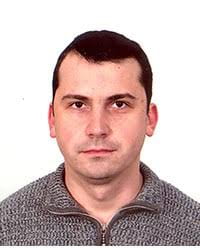 Goran Mandic
Goran Mandic
PhD Graduate, July 2012
Dissertation: “LITHIUM-ION ULTRACAPACITOR ENERGY STORAGE INTEGRATED WITH A VARIABLE SPEED WIND TURBINE FOR IMPROVED POWER CONVERSION CONTROL”
Abstract: The energy of wind has been increasingly used for electric power generation worldwide due to its availability and ecologically sustainability. Utilization of wind energy in modern power systems creates many technical and economical challenges that need to be addressed for successful large scale wind energy integration. Variations in wind velocity result in variations of output power produced by wind turbines. Variable power output becomes a challenge as a number of wind turbines integrated into power systems increase. Power variations cause voltage and frequency disturbances that may lead to activation of relay protective equipment, that sense these disturbances, which may result in power outages. While a majority of power produced in modern power systems comes from synchronous generators that have large inertias and whose control systems can compensate for slow power variations in the system, faster power variations at the scale of fraction of a second to the tens of seconds can seriously reduce reliability of power system operation. Energy storage integrated with wind turbines can address this challenge. In this dissertation, lithium-ion ultracapacitors are investigated as a potential solution for filtering power variations at the scale of tens of seconds. Another class of issues related to utilization of wind energy is related to economical operation of wind energy conversion systems. Wind speed variations create large mechanical loads on wind turbine components, which lead to their early failures. One of the most critical components of a wind turbine is a gearbox that mechanically couples turbine rotor and generator. Gearboxes are exposed to large mechanical load variations which lead to their early failures and increased cost of wind turbine operation. This dissertation proposes a new critical load reduction strategy that removes mechanical load components that are the most dangerous in terms of harmful effect they have on a gearbox, resulting in more reliably operation of a wind turbine.
BSEE, University of Belgrade, Belgrade, Serbia, 2004.
Lead Engineer
Eaton Corporation, Raleigh, NC
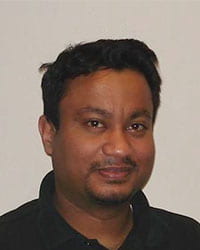 Ravi Nanayakkara
Ravi Nanayakkara
PhD Graduate, December 2012
Dissertation: “SCR-BASED WIND ENERGY CONVERSION CIRCUITRY AND CONTROLS FOR DC DISTRIBUTED WIND FARMS”
Abstract: The current state of art for electrical power generated by wind generators are in alternating current (AC). The wind farms distribute this power as 3-phase AC. There are inherent stability issues with AC power distribution. The grid power transfer capacity is limited by the distance and characteristic impedance of the lines. Furthermore, wind generators have to implement complicated, costly, and inefficient back-to-back converters to implement AC generation. AC distribution does not offer an easy integration of energy storage. To mitigate these drawbacks with AC generation and distribution, direct current (DC) generation and high voltage direct current (HVDC) distribution for the wind farms is proposed. DC power distribution is inherently stable. The generators convert AC power to DC without the use of a back-to-back converter. DC grid offers an easy integration of energy storage.
The proposed configuration for the generator is connected to a HVDC bus using a 12 pulse thyristor network, which can apply Maximum Power Point Tracking (MPPT). To properly control the system, several estimators are designed and applied. This includes a firing angle, generator output voltage, and DC current estimators to reduce the noise effects. A DSP-based controller is designed and implemented to control the system and provide gate pulses. Performance of the proposed system under faults and drivetrain torque pulsation have been analyzed as well. Converter paralleling when turbines operate at different electrical power levels are also studied. The proposed new Wind Energy Conversion System (WECS) is described in details and is verified using MATLAB®/ Simulink® simulation and experimental test setup. The proposed solution offers higher reliability, lower conversion power loss, and lower cost. The following is proposed as future work. Study different control methods for controlling the SCR’s. Investigate reducing torque pulsations of the PMSG as well as using the proposed power conversion method for DFIG turbines. Explore options for communication/control between PMSG, circuit protection and grid-tied inverters. Investigate the best possible configuration for DC storage/connection to the HVDC/MVDC bus. Study the filtering needed to improve the DC bus voltage at the generator.
MSEE from Marquette University, Milwaukee, WI, 2001.
BSEE University of Wisconsin-Milwaukee, Milwaukee, WI, 1997.
Electrical Engineer
Rockwell Automation, Milwaukee, WI
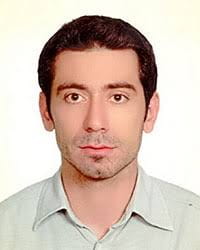 Ali Esmaili
Ali Esmaili
PhD Graduate, May 2012
Dissertation: “ENERGY STORAGE FOR SHORT-TERM AND LONG-TERM WIND ENERGY SUPPORT”
Abstract: Wind farm output power fluctuations create adverse effects on the voltage, frequency, and transient stability of the utility grid. Short term wind farm power variations and steep ramp rates cause voltage instability, especially if the farm is located in weak grid areas. In this diisertation, integration of wind energy with energy storage devices to support the short-term shortcomings of wind energy is discussed. A turbine level hybrid configuration of an energy storage system is used to limit the power ramp rate and apply power smoothing. The utilized energy storages devices are zinc bromide flow battery and Lithium-Ion Capacitors (LIC). The actual models of the battery and capacitor, which are derived from testing, are used in this study. The wind farm power is also modeled using measured wind speed data. FCP and ACP as two new concepts have been introduced to evaluate the effect of energy storage system for wind energy support. The analyses show that significant improvements can be made to shape the output power of the farm using practical and turbine level energy storage systems.
Moreover, the dissertation studies a wind farm integrated with a storage device in order to shift the wind power generation to the peak demand periods. A model of system including practical utility level battery integrated with wind farm at wind turbine level is developed and presented. In order to measure the effect of this integration, actual profiles of load, wind energy, and other power sources is studied and the Effective Load Carrying Capability (ELCC) for wind energy, after and before adding the battery, is calculated. Results show that the battery can make some improvements in the ELCC of wind energy.
A wind turbine emulator is built in the lab, and was connected to a storage device, which is tied to the grid. Different tests were conducted at various situations. The wind emulator power data indicates the need for a mechanism to reduce the uncertainty of the wind power. The analysis and figures show that wind power variations and fluctuations can be mitigated using a storage system with a proper control algorithm.
MSEE from Sharif University of Technology, Tehran, Iran, 2005.
BSEE from Shiraz (Pahlavi) University , Shiraz, Iran, 2003.
Senior Design Engineer,
Caterpillar Inc, South Milwaukee, WI.
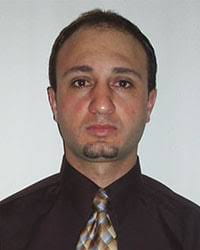 Omar Abdel-baqi
Omar Abdel-baqi
PhD Graduate, July 2010
Dissertation: “SERIES VOLTAGE COMPENSATION FOR DOUBLY-FED INDUCTION GENERATOR WIND TURBINE LOW VOLTAGE RIDE-THROUGH SOLUTION”
Abstract: Wind is clean and unlimited free source of energy. But in order for the wind energy to be effectively and efficiently harvest without interruption, the wind generators required to ride-through grid disturbances and support the grid during voltage sag events. The Doubly-Fed Induction Generator (DFIG) is known for its poor response to the voltage sags. This work develops an approach to provide a robust ride through technique for the DFIG during different types of voltage sags.
In this work, a mathematical model for the DFIG is developed and used to analyze the voltage sags effects. The DFIG stator flux is the main state that affects the system during the voltage sags. A component of the stator flux declines with the slow time constant of the generator during sudden voltage sag and forces a large rise of current in the rotor windings. This current rise damages double conversion power electronics converter connected to the rotor winding.
The existing techniques for Low Voltage Ride Through (LVRT) solutions have many drawbacks. In brief, they introduce undesirable spikes in generator torque and currents. In addition, they do not provide support to the grid during low voltage conditions.
In order to mitigate the effect of the slow declining component of the stator flux during voltage sags, the system is augmented with a series converter on stator circuitry. The converter injects a voltage on the stator to correct the air gap flux and to ultimately prevent the rotor current rise. A dead-beat control technique is developed to adjust the converter. In addition to the extensive computer simulation, a laboratory scale prototype is developed to validate the proposed solution. The size of the energy storage system required for the converter is also discussed in this thesis.
Future work directions are proposed including more robust control technique, minimizing number of additional parts and bigger laboratory scale prototype.
MSEE in Signal and System, University of Detroit Mercy, Detroit, USA, 2005.
BS in Industrial Automation, Palestine Polytechnic University, Palestine.
Sr. Engineering Specialist
Caterpillar Global Mining LLC
 Tin T. Luu
Tin T. Luu
PhD Graduate, December 2010
Dissertation: “TRANSIENT STABILITY IMPROVEMENT FOR DFIG WIND TURBINES USING ULTRACAPACITOR”
Abstract: Wind energy source is characterized as variable and unpredictable. A random wind speed and blade rotational turbulence can produce fluctuations on the voltage and power supplied into the system. This fluctuated power makes the wind power undispatchable, causing frequency deviations and power outage when wind power penetration is significant. The fluctuating power will impact on power balance and voltage at the point of common coupling. Output power of wind turbine is cubic function of the wind speed. Since wind speed is a nearly random parameter, the output power of the wind turbine is also random process. Even a small variation of wind speed could cause a large variation in the output power. As a result, a large voltage fluctuation may cause voltage variations outside the regulation limit at connection point.
Energy storage devices such as batteries, ultra capacitors, super inductors, and flywheels can be utilized in a hybrid system to solve this problem. A selective control method to mitigate the power fluctuations using the rotor inertia is introduced in the literature. This method is also modified to obtain better energy capturing efficiency. The energy extracting capability using this method is comparable with other methods such as Maximum Power Extraction (MPE) algorithm. In this thesis, a new integrated topology of DFIG wind turbine and Ultracapcitor is introduced. The Ultracapcitor is directly placed on the DC bus of the power conversion device on the rotor. A control technique is developed to adjust the active and reactive power of the turbine, apply power smoothing, and keep the DC bus voltage within an acceptable range.
Matlab Simulink simulation results for various cases are performed on a doubly fed induction generator that verifies the theoretical analysis.
MSEE University of Wisconsin-Milwaukee, WI, 2005
BSEE University of Wisconsin-Milwaukee, WI, 2003
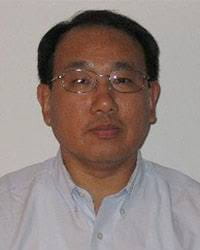 YounHee Lee
YounHee Lee
PhD Graduate, Aug 2008
Dissertation: Modeling and Simulation of Conducted EMI Noise Generated in the Electric Power Converters of the Electric and Hybrid Electric Vehicles
Abstract: In developing a complex power electronic system, proper modeling at prototype sample level can save the time and cost to develop final product. Hybrid Electric Vehicle (HEV) is equipped with several high-powered electric devices such as DC/DC converters and DC/AC inverters. Considering that there are many restrictions in mounting and wiring the electric power system in engine room, analysis and modeling of Electromagnetic Interference (EMI) coupling path is crucial in designing optimal electric power system satisfying various EMC regulations. In this thesis, conductive common mode (CM) and differential mode (DM) equivalent models for those electric power converters used in Hybrid Electric Vehicles (HEV) were developed and evaluated through the simulation both in time domain and frequency domain. The simulation results were compared to those of real experimental tests performed in EMC testing Laboratory. It is confirmed that the suggested noise equivalent models followed the actual power electric systems in the point of conducted CM and DM EMI view.
BSEE from Kookmin University, Seoul, Korea, 1985
MSEE from Polytechnic University, NY, 1994
Senior Project Engineer
at General Motors, Hybrid Power Electronics
 Asghar Abedini
Asghar Abedini
PhD Graduate, December 2008
Dissertation: Integration of Permanent Magnet Synchronous Generator Wind Turbines into Power Grid.
Abstract: Wind energy is becoming a major source of generating electrical energy. High price of oil and environmental issues are the most incentives to develop wind power plants. Due to high price of foundation of wind farms, employing variable speed wind turbines to maximize the extracted energy from blowing wind is more beneficial.
On the other hand, since wind power is intermittent, integrating energy storage systems with wind farms has attracted a lot of attention.
These two subjects are addressed in this dissertation in detail. Permanent Magnet Synchronous Generators (PMSG) are used in variable speed wind turbines. In this thesis, the dynamic of the PMSG is investigated and a power electronic converter is designed to integrate the wind turbine to the grid. The risks of PMSG wind turbines such as low voltage ride through and short circuits, are assessed and the methods of mitigating the risks are discussed.
In the second section of the thesis, various methods of smoothing wind turbine output power are explained and compared. Two novel methods of output power smoothing are analyzed: Rotor inertia and Super capacitors. The advantages and disadvantages of each method are explained and the dynamic model of each method is developed. The performance of the system is evaluated by simulating the wind turbine system in each method.
The concepts of the methods of smoothing wind power can be implemented in other types of wind turbines such as Doubly Fed Induction Generator (DFIG) wind turbines.
MSEE from Sharif University of Technology, Tehran, Iran, 2003.
BSEE from Isfahan University of Technology, Isfahan, Iran, 2001.
Assistant Professor of Electrical and Computer Engineering Department,
Khaje Nasir Toosi University of Technology, Tehran, Iran.